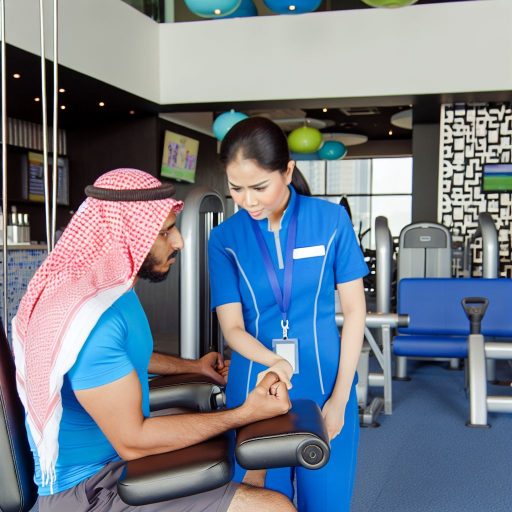Seating strategies for hosts/hostesses are crucial for a smooth dining experience.
Proper seating can enhance guest satisfaction.
Hosts/hostesses play a key role in effectively managing seating arrangements.
Understanding the layout of the dining area:
- Knowing the layout is crucial for efficient seating
- Hosts should be aware of seating capacities and table sizes
- Utilize available seating options effectively for better guest experience
Understanding the layout of the dining area is essential for hosts and hostesses to effectively manage seating arrangements.
By familiarizing themselves with the restaurant or event space’s layout, hosts can ensure a smooth and organized seating process.
Significance of knowing the layout:
- Helps in planning and organizing seating arrangements
- Ensures efficient use of available space
- Prevents overcrowding or empty tables
- Facilitates better flow of service
When hosts understand the layout of the dining area, they can strategically seat guests to optimize capacity and create a comfortable dining experience for everyone.
Being familiar with seating capacities and table sizes:
- Knowing seating capacities avoids overcrowding
- Understanding table sizes helps in accommodating different group sizes
- Ensures guests are seated comfortably
Hosts and hostesses should be aware of the restaurant or event space’s seating capacities and table sizes to seat guests appropriately.
By matching group sizes with suitable tables, hosts can ensure that guests are comfortable and have enough space.
Tips to make the most of available seating options:
- Use a floor plan layout to visualize seating arrangements
- Assign tables based on guest preferences and group sizes
- Consider seating dynamics like booth vs. table seating
- Utilize outdoor seating or private dining areas if available
To maximize the available seating options, hosts can use a floor plan layout to visualize the seating arrangements effectively.
By assigning tables based on guest preferences and group sizes, hosts can create a more tailored and enjoyable dining experience for guests.
Prioritizing guest preferences:
Guest preferences should be at the forefront of any host or hostess’s mind when planning seating arrangements.
It is essential to make guests feel comfortable and valued by taking into account their preferences.
Special requests, such as proximity to certain guests or being seated away from a high-traffic area, should be carefully considered.
Additionally, dietary restrictions must be accommodated with appropriate seating arrangements to ensure guests can enjoy their meals without any issues.
Seating preferences, such as booth versus table seating or near the window versus the center of the room, can greatly impact the guest’s overall experience.
By understanding and accommodating these preferences, hosts and hostesses can create a more enjoyable dining atmosphere.
To effectively manage guest seating preferences, communication is key.
Prior to the event, hosts should reach out to guests to gather any special requests or preferences they may have.
This information can then be used to create a seating plan that meets the needs of all guests while maintaining a harmonious balance.
During the event, hosts should be prepared to make adjustments on the fly if necessary.
Transform Your Career Today
Unlock a personalized career strategy that drives real results. Get tailored advice and a roadmap designed just for you.
Start NowFlexibility and quick thinking can help address any unexpected issues that may arise with seating preferences.
By staying attentive to guest needs and making adjustments as needed, hosts can ensure a positive dining experience for all guests.
Prioritizing guest preferences when assigning seating is crucial for creating a welcoming and enjoyable dining experience.
By considering special requests, dietary restrictions, and seating preferences, hosts and hostesses can demonstrate their attentiveness and care for their guests.
Effective management of guest seating preferences requires proactive communication, flexibility, and a commitment to meeting guest needs.
- Emphasize the importance of accommodating guest preferences when assigning seating.
- Discuss the need to consider special requests, dietary restrictions, and seating preferences.
- Offer suggestions on how to effectively manage guest seating preferences while maintaining a balance.
Explore Further: Dress Code and Appearance Standards for Casino Dealers
Managing walk-ins and reservations:
Handling walk-in guests can be challenging as they arrive unexpectedly, disrupting the seating plan.
To efficiently seat walk-ins without disrupting reservations, designate a separate area or section for them.
Balancing last-minute guests and honoring reservations can be achieved by prioritizing reservation times and table availability.
Explore Further: Top Skills Every Successful Host/Hostess Needs
Group seating dynamics:
Seating larger groups or parties can be a challenging task for hosts or hostesses.
It requires careful planning and consideration to ensure that everyone has an enjoyable dining experience.
Complexities of seating larger groups:
- Coordination of seating arrangements
- Accommodating various dietary restrictions
- Maintaining a balance of space and comfort
Handling larger groups involves juggling multiple factors to create a cohesive dining experience.
It’s essential to take into account the preferences and dynamics of each group to ensure a successful seating arrangement.
Strategically placing groups:
- Create a seating plan based on group size and preferences
- Consider proximity to the kitchen or bar for efficient service
- Balance noise levels and ambience for different types of groups
By strategically placing groups, hosts or hostesses can create a seamless dining experience that caters to the specific needs of each party.
It’s crucial to consider factors such as noise levels, ambience, and service accessibility when organizing group seating arrangements.
Managing group dynamics:
- Facilitate conversation by seating compatible guests together
- Ensure equal distribution of attention from servers
- Address any potential conflicts or special requests proactively
Managing group dynamics involves maintaining a balance between accommodating individual needs and fostering a sense of unity among guests.
By addressing conflicts or special requests promptly, hosts or hostesses can create a harmonious dining environment that promotes satisfaction and enjoyment.
Discover More: Customer Retention Strategies for Fitness Centers
Maximizing seating capacity
During peak times, it is crucial for hosts and hostesses to maximize seating capacity in order to accommodate as many guests as possible.
Transform Your Career Today
Unlock a personalized career strategy that drives real results. Get tailored advice and a roadmap designed just for you.
Start NowThis requires strategic planning and efficient use of space to ensure a smooth dining experience for everyone.
Techniques for maximizing seating capacity
- Utilize all available space: Be creative in arranging tables and chairs to fit more guests without sacrificing comfort.
- Implement a reservation system: This helps in managing the flow of guests and prevents overcrowding.
- Offer communal seating: For larger groups, consider seating them together at long communal tables to make the most of the space.
- Use high-top tables: These take up less space than traditional tables and can accommodate more guests in a limited area.
- Consider outdoor seating: If weather permits, outdoor seating can be a great way to increase seating capacity during peak times.
Turning tables efficiently without rushing guests
Turning tables is essential for maximizing seating capacity, but it must be done without making guests feel rushed or uncomfortable.
It is important to strike a balance between efficiency and hospitality to ensure a positive dining experience for everyone.
- Monitor wait times: Keep track of how long guests have been waiting and strive to seat them as quickly as possible without compromising service quality.
- Encourage ordering in a timely manner: Guide guests in placing their orders promptly to keep the meal moving along smoothly.
- Check in periodically: Ensure that guests are comfortable and satisfied with their experience while also subtly reminding them of the time.
- Offer incentives for timely dining: Consider offering complimentary dessert or drinks for guests who finish their meal within a certain time frame.
- Train staff accordingly: Provide servers with the necessary training to deliver efficient service without making guests feel pressured.
Balancing speed and quality service while maximizing seating availability
Managing seating capacity efficiently requires hosts and hostesses to find a delicate balance between speed and quality service.
It is crucial to prioritize guest satisfaction while also maximizing revenue by turning tables quickly and effectively.
- Ensure proper staff levels: Have enough servers on hand to handle the influx of guests during peak times while maintaining high service standards.
- Streamline processes: Implement efficient systems for taking orders, delivering food, and processing payments to speed up table turnover.
- Communicate effectively: Keep guests informed about wait times and table availability to manage expectations and minimize dissatisfaction.
- Provide personalized service: Make guests feel welcome and attended to, even during busy times, to enhance their overall dining experience.
- Seek feedback: Encourage guests to provide feedback on their experience to continuously improve seating strategies and service quality.
By implementing these strategies, hosts and hostesses can effectively maximize seating capacity, turn tables efficiently, and balance speed and quality service to create a positive dining experience for guests during peak times.
Find Out More: Importance of Pest Control in Public Health

Communicating with the Serving Staff
Effective communication with the serving staff is crucial in ensuring a smooth and efficient dining experience for guests.
Here are some tips on how hosts and hostesses can effectively communicate with the serving team to enhance guest satisfaction.
- Set clear expectations: Before the service begins, it is important for hosts/hostesses to communicate clearly with the serving staff about the seating arrangements, special requests, and any specific guest preferences.
- Update the serving team: As guests arrive and seating arrangements change, it is essential to keep the serving staff informed.
- Establish a communication system: Implementing a communication system, such as using walkie-talkies or a messaging app, can help hosts/hostesses stay in constant communication with the serving staff.
- Prioritize teamwork: Encourage a spirit of collaboration between hosts/hostesses and the serving team. By working together as a cohesive unit, both parties can effectively manage seating assignments and address guest needs promptly.
- Provide clear instructions: When coordinating seating assignments with the serving team, hosts/hostesses should provide clear instructions on guest preferences, dietary restrictions, and any special accommodations.
- Foster a positive work environment: Effective communication between hosts/hostesses and the serving team is about building a positive rapport. Encourage open dialogue, active listening, and mutual respect to create a harmonious work environment that benefits both staff and guests.
Clear and effective communication between hosts/hostesses and the serving staff is essential for seamless service and enhanced guest experience.
By following these tips and prioritizing teamwork, hosts and hostesses can ensure a well-coordinated seating process that contributes to overall guest satisfaction.
Handling seating challenges:
- Address common seating challenges faced by hosts/hostesses.
- Offer solutions for dealing with seating issues such as late arrivals, special requests, and last-minute changes.
- Provide strategies for remaining calm and professional when managing unexpected seating challenges.
Dealing with seating challenges is a crucial aspect of being a successful host or hostess.
Despite careful planning, unexpected situations can arise that may require quick thinking and adaptability.
Addressing common seating challenges:
One common challenge hosts face is accommodating late arrivals.
This can disrupt the seating arrangement and cause delays in the dining experience for other guests.
Another challenge is handling special requests, such as dietary restrictions or preferences.
Ensuring that guests with specific needs are seated appropriately requires attention to detail and communication with the kitchen staff.
Last-minute changes, whether due to cancellations or additions to the guest list, can also present challenges.
Maintaining a flexible seating plan is essential to accommodate these changes efficiently.
Transform Your Career Today
Unlock a personalized career strategy that drives real results. Get tailored advice and a roadmap designed just for you.
Start NowSolutions for dealing with seating issues:
To address late arrivals, consider leaving a few open seats strategically placed near the entrance.
This will allow you to easily accommodate guests who arrive after the initial seating arrangement is set.
For special requests, communicate with guests ahead of time to gather information about their preferences.
This will help you assign seating that meets their needs without causing disruptions during the event.
When faced with last-minute changes, remain calm and assess the situation quickly.
Having a backup seating plan in mind will help you make adjustments smoothly and without causing confusion among guests.
Strategies for remaining calm and professional:
Maintaining a positive attitude is key to managing unexpected seating challenges effectively.
Remember that unforeseen circumstances are part of the job and approach each situation with a problem-solving mindset.
Communication is essential in handling seating challenges.
Keep guests informed of any changes in the seating plan and reassure them that you are committed to providing a pleasant experience despite the challenges.
Delegate tasks to your team members if needed, to ensure smooth coordination in seating arrangements.
Working as a team will help alleviate the pressure of managing seating challenges on your own.
Overall, staying composed and adaptable in the face of seating challenges will showcase your professionalism and enhance the dining experience for your guests.
Embrace these challenges as opportunities to showcase your hospitality skills and problem-solving abilities.
Effective Seating Strategies for Hosts/Hostesses
Effective seating strategies for hosts/hostesses are crucial for a successful dining experience.
Importance of Planning Ahead
Ensure seating accommodates guest preferences and group dynamics.
Considerations for Seating Arrangement
Balance proximity, comfort, and visual appeal for guests.
Implementing a Seating Chart
Assign seats strategically based on preferences and relationships.
Transform Your Career Today
Unlock a personalized career strategy that drives real results. Get tailored advice and a roadmap designed just for you.
Start NowManage Seating Changes Gracefully
Be flexible in accommodating last-minute adjustments or guest requests.
Offering Choices in Seating
Provide guests with options to choose their preferred seating arrangements.
Communication and Coordination
Keep everyone informed about seating arrangements and changes.
Seating Etiquette and Courtesy
Ensure guests feel comfortable and respected in their assigned seats.
By planning ahead, considering seating arrangements, implementing a seating chart, managing changes gracefully, offering choices, maintaining communication, and practicing seating etiquette, hosts/hostesses can ensure a positive and enjoyable dining experience for their guests.
It is important to reinforce the significance of these strategies and encourage hosts/hostesses to implement these tips for a seamless and pleasant dining experience.
Additional Resources
What should I do to be a good hostess in a restaurant? – Quora




